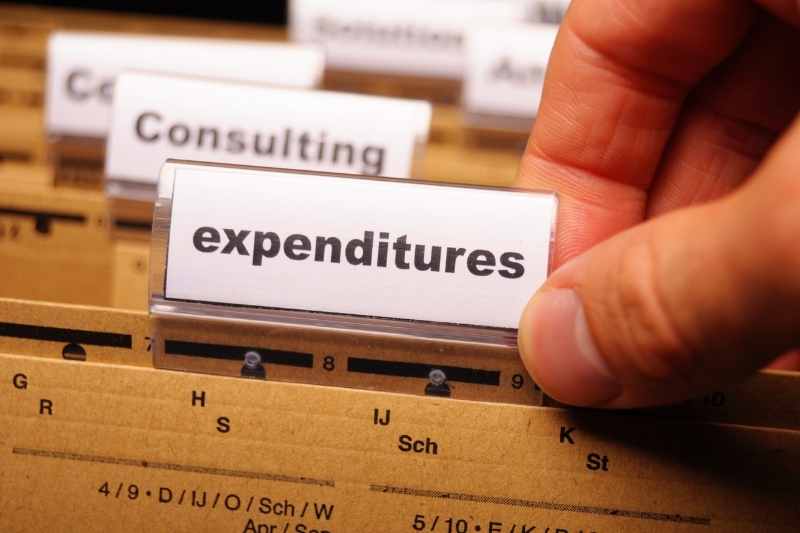Key takeaways
- CapEx refers to expenses that improve or add to a property, and are typically reserved from monthly revenue due to their often substantial cost.
- CapEx is distinguished from operating expenses and must be planned and budgeted for separately, often via a reserve fund to cover emergency or long-term project costs.
- Examples of real estate CapEx include major investments such as replacing roofs, overhauling HVAC systems, implementing building automation, or undertaking new development projects.

As a property manager or owner, you know that buildings require maintenance, renovations, and appliance replacements or upgrades. In addition to normal operating expenses, you may need to invest in “big ticket” items to maintain and enhance your property. This real estate metric is known as capital expenditures, more commonly known as CapEx.
But how do you decide which expenses are worth it? In this post, we do a deep dive into CapEx real estate, provide tips for budgeting for it, and explain why property technology (proptech) is a good use for it.
In this guide, we’ll cover:
- What are capital expenditures?
- Examples of CapEx in real estate
- Tips for planning and budgeting for CapEx
- Why proptech is a great CapEx
What are capital expenditures (CapEx)?
Capital expenditures (CapEx) are any expenses used to invest, purchase, renovate, and maintain physical assets such as buildings, technology, or equipment. Companies often use CapEx to embark on new projects or investments.
Unlike operational expenses (which are used to calculate your NOI), capital expenditures are recorded — or capitalized — on balance sheets. This means that CapEx is not expensed on monthly or annual income statements. As a result, CapEx also isn’t factored in when calculating a property’s capitalization rate.
Overall, the purpose of CapEx is to increase the scope and efficiency of the business operation, in turn adding economic value to the organization. And if the good or service has a useful life of less than one year, it has to be expensed on the income statement — it cannot be considered as CapEx.

CapEx formula & calculation
The following is the formula for calculating CapEx:
CapEx = PP&E + Current depreciation
where:
PP&E is the change in property, plant, and equipment in the current period from the prior. The difference is usually calculated yearly.
CapEx real estate
In real estate, CapEx are expenses that go toward adding to or improving a property beyond common, routine repairs and maintenance. Since the costs associated with these improvements are usually substantial, real estate professionals put aside cash from their monthly revenue into reserves.
Sometimes referred to as a capital expenditures budget, a reserve fund is a savings account or another highly liquid asset set aside to finance emergency and major long-term projects. How much you put into these reserves varies depending on the type and size of your property, mortgage or investment lender, and property management company.
Overall, estimating and accounting for CapEx is crucial when creating a property management budget. Whether for an emergency or long-term projects/investments, CapEx can come with high price tags. So, you must budget and plan for these kinds of expenditures.
Examples of CapEx in real estate
Capital expenditure examples in real estate include a wide range of goods and services. As a rule of thumb, an expense is considered a capital expenditure when the newly acquired asset or investment improves the long-term useful life of the property.
Here are some examples of CapEx in real estate:
- Replacing the building’s roof
- Repairing the building-wide HVAC system
- Implementing a new building automation system
- Investing in a new development project
It’s important to note that a capital expenditure must be a big enough purchase or project that it’s expected to depreciate over time. Unlike routine repairs, CapEx significantly improves the property conditions or extends its lifespan — they do more than simply return the property to its original state.
Learn more about capital expenditures:
Operating expenses vs. capital expenditures
Although operating expenses (OpEx) and capital expenditures can seem similar, they’re entirely separate from each other. OpEx is routine expenses that help manage a property, such as paying property staff, property taxes, and legal fees. They’re expenses necessary for operating and maintaining the property regularly.
Operating expenses for properties include:
- Rent or mortgage payments
- Staff payroll
- Property marketing and advertising
- Insurance
Additionally, the IRS also views operating expenses differently from capital expenditures. Namely, the IRS allows businesses to deduct operating expenses from their tax forms, whereas capital expenditures are taxable.
Tips for planning & budgeting for CapEx
Now that we’ve explained real estate CapEx in great detail, let’s discuss some helpful tips for budgeting and planning for these expenditures. As a property manager or owner, it’s crucial to improve your financial literacy by distinguishing between capital expenditures and operating expenses, planning for CapEx, and determining which CapEx is worthwhile.
The most important step in budgeting for CapEx is determining which investments will maximize the profit and value of your property in the long run. Also, you may want to consider the age and condition of your property to estimate its remaining lifespan. For example, if the property is on the verge of total deterioration, investing in capital expenditures probably isn’t the best use of time and money.
Three questions to consider when choosing CapEx:
- How many years will it take to complete this project? And for how much longer after that will the property continue profiting from it?
- What will be the long-term benefits of this investment or project? (i.e., can it increase the rent or value of the property? Will it help avoid major problems in the future?)
- What is the depreciation rate of the capital investment of interest? Will it continue to generate a net profit year after year?

How to calculate the capital budget for reserves
Once you’ve decided which capital asset or project to budget for, you then need to figure out where you’ll gather the capital reserves. There isn’t a set rule on approaching the budget allocation process for the reserves, but many property management companies or financial institutions associated with specific properties have their own guidelines. Consult with them during your budgeting process.
There are many ways to approach it if you have a free say on calculating the capital reserve. Ultimately, the method you use will depend on the scale of the project, the priority or urgency of the project, and the property valuation and occupancy rate.
Possible methods for calculating the capital reserves budget:
- Percentage of your net operating income
- Percentage of property value
- Evaluation of current age of items to replace and cost of replacement
- Fixed amount per unit
Why proptech is a great CapEx
If you’re looking for a way to improve and increase the value of your property, investing in smart proptech solutions is a great capital expenditure.
Three reasons why proptech makes a great CapEx investment:
- Improves and enhances the tenant experience
- Increases the value of your property
- Lowers your building’s daily operating costs
1. Improves & enhances the tenant experience
Access control solutions like cloud-based intercom systems simplify property access at your building. Tenants enjoy seamless keyless entry into their buildings and can remotely open doors and gates for guests from anywhere in the world.
Proptech improves and adds convenience to your tenants’ daily lives. And an enhanced tenant experience increases retention and lease renewal rates, which in turn lowers turnover costs. You probably already know that it costs more to attract prospective residents than to keep existing ones.
By installing convenient proptech solutions, you’re showing residents that you care about their living experiences as well as their safety and well-being. Numerous studies show that residents put security amenities as the top feature they seek out when apartment hunting.

2. Increases the value of your property
Implementing proptech devices at your property increases its resale value, rental rates, and net operating income. Older properties retrofitted with the latest proptech solutions also experience higher-than-average market valuations.
What’s more, proptech investments help future-proof properties and ensure they continue generating maximum profits, withstanding the test of time. The real estate industry is still behind the curve when it comes to mass technology adoption. But if you invest in proptech today, you’ll be way ahead of your competition. Your property will likely have a higher valuation than others in its asset class.
3. Lowers the daily operating costs of your property
Not only does proptech increase the value of your property, but it also maximizes the efficiency of its daily operations. Although CapEx isn’t included in the NOI calculation, investing in the right capital can lower operating costs, which maximizes your overall profit.
Since most of today’s proptech devices are cloud-based, there are little to no maintenance costs associated with them. After a short period of time, these devices pay for themselves by automating building processes. In turn, you can reduce property staff shifts, further reducing operating costs. Instead, your staff can focus more on providing residents with high-touch services, such as planning community-building events and tending to interpersonal requests.







